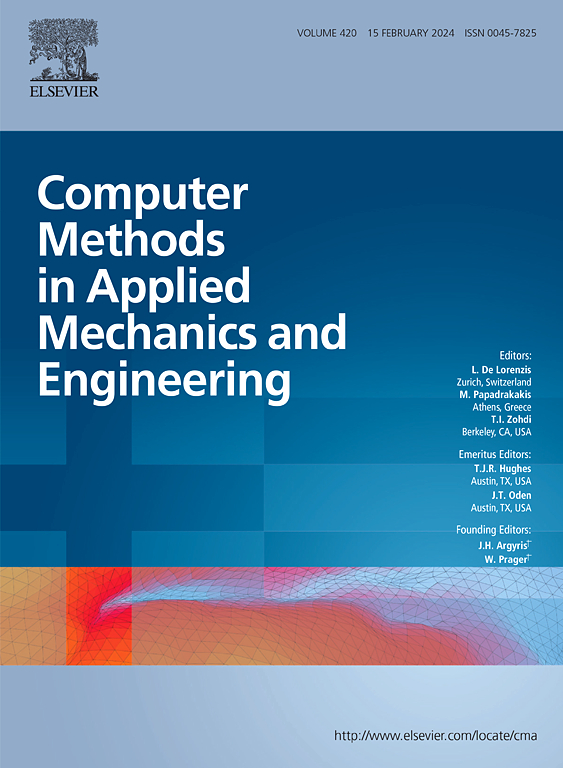A model-constrained discontinuous Galerkin Network (DGNet) for compressible Euler equations with out-of-distribution generalization
IF 6.9
1区 工程技术
Q1 ENGINEERING, MULTIDISCIPLINARY
Computer Methods in Applied Mechanics and Engineering
Pub Date : 2025-03-28
DOI:10.1016/j.cma.2025.117912
引用次数: 0
Abstract
Real-time accurate solutions of large-scale complex dynamical systems are critically needed for control, optimization, uncertainty quantification, and decision-making in practical engineering and science applications, particularly in digital twin contexts. Recent research on hybrid approaches combining numerical methods and machine learning in end-to-end training has shown significant improvements over either approach alone. However, using neural networks as surrogate models generally exhibits limitations in generalizability over different settings and in capturing the evolution of solution discontinuities. In this work, we develop a model-constrained discontinuous Galerkin Network (DGNet) approach, a significant extension to our previous work (Nguyen and Bui-Thanh, 2022), for compressible Euler equations with out-of-distribution generalization. The core of DGNetis the synergy of several key strategies: (i) leveraging time integration schemes to capture temporal correlation and taking advantage of neural network speed for computation time reduction. This is the key to the temporal discretization-invariant property of DGNet; (ii) employing a model-constrained approach to ensure the learned tangent slope satisfies governing equations; (iii) utilizing a DG-inspired architecture for GNN where edges represent Riemann solver surrogate models and nodes represent volume integration correction surrogate models, enabling capturing discontinuity capability, aliasing error reduction, and mesh discretization generalizability. Such a design allows DGNetto learn the DG spatial discretization accurately; (iv) developing an input normalization strategy that allows surrogate models to generalize across different initial conditions, geometries, meshes, boundary conditions, and solution orders. In fact, the normalization is the key to spatial discretization-invariance for DGNet; and (v) incorporating a data randomization technique that not only implicitly promotes agreement between surrogate models and true numerical models up to second-order derivatives, ensuring long-term stability and prediction capacity, but also serves as a data generation engine during training, leading to enhanced generalization on unseen data. To validate the theoretical results, effectiveness, stability, and generalizability of our novel DGNetapproach, we present comprehensive numerical results for 1D and 2D compressible Euler equation problems, including Sod Shock Tube, Lax Shock Tube, Isentropic Vortex, Forward Facing Step, Scramjet, Airfoil, Euler Benchmarks, Double Mach Reflection, and a Hypersonic Sphere Cone benchmark.
求助全文
约1分钟内获得全文
求助全文
来源期刊
CiteScore
12.70
自引率
15.30%
发文量
719
审稿时长
44 days
期刊介绍:
Computer Methods in Applied Mechanics and Engineering stands as a cornerstone in the realm of computational science and engineering. With a history spanning over five decades, the journal has been a key platform for disseminating papers on advanced mathematical modeling and numerical solutions. Interdisciplinary in nature, these contributions encompass mechanics, mathematics, computer science, and various scientific disciplines. The journal welcomes a broad range of computational methods addressing the simulation, analysis, and design of complex physical problems, making it a vital resource for researchers in the field.

 求助内容:
求助内容: 应助结果提醒方式:
应助结果提醒方式:


